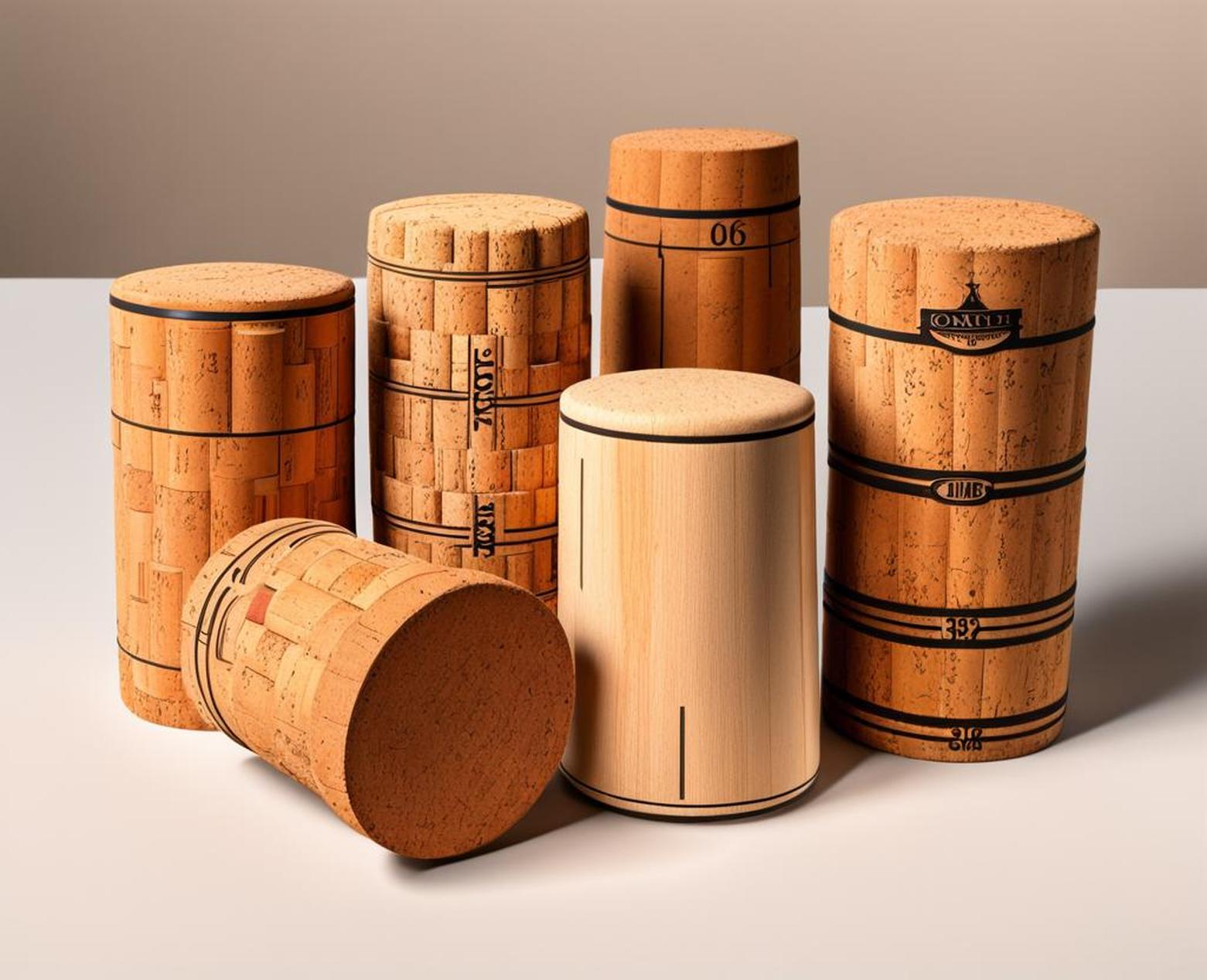Cork stoppers have been used to seal wine bottles for centuries. With the proper size and fit, corks form an airtight barrier that allows wine to age gracefully. However, incorrectly sized corks lead to leaks, oxidation, and ruined product. Using a cork stopper size chart helps ensure you find corks that match your unique bottle necks.
You’ll learn pro techniques used by seasoned wine makers and distillers. Say goodbye to leaks and spoiled batches by mastering cork sizing strategies.
Cork Stopper Sizing Charts
Cork stopper size charts provide the key measurements used for selecting the right corks.
What are cork stopper size charts?
Cork size charts match a bottle’s neck opening diameter to appropriate cork diameters. They ensure you choose a cork that compresses when inserted to create an airtight seal.
Key measurements on size charts
Typical charts list these dimensions:

- Bottle neck inner diameter: the inside width of the bottle neck opening
- Cork stopper diameters – top, middle, bottom: the measurements across the cork from top to bottom
- Length/height of cork: the cork’s height when positioned vertically
You’ll use the bottle’s inner neck diameter to identify the correct middle cork diameter range on the chart.
Standard vs. custom size charts
Some charts provide standard wine bottle and cork sizes. Others allow you to order custom corks tailored to your unique bottle dimensions.
Different size charts by industry
While most size charts focus on wine, some provide sizes for spirits, beer, perfumes, oils, and more. Check if your cork supplier has a chart specific to your industry.
How To Use A Cork Stopper Size Chart
Using a size chart takes just a few simple steps:
Step 1: Measure bottle neck inner diameter
Use a bottle neck/bore gauge to precisely measure the inside opening of the bottle necks. Note measurements in millimeters.
Step 2: Match diameter to size chart listings
Locate your bottle neck measurement on the chart to identify the correct middle cork diameter size(s).
Step 3: Identify correct cork stopper size range
| Bottle Neck Diameter | Correct Cork Size |
| 0.75 inches | 0.73 – 0.75 inches |
| 1.0 inches | 0.95 – 1.02 inches |
Choose a cork size that matches or slightly exceeds barrel diameter.
Step 4: Obtain sample corks and test for fit
Before purchasing a large quantity, source sample size corks and manually test insertion into your bottles. This verifies an airtight compression seal.
Tips for measuring and testing
- Use proper measuring tools for precision
- Check diameter in multiple neck points
- Test multiple sample corks before purchasing
Factors In Selecting Cork Stoppers
Consider these factors when choosing corks:
Material compatibility
Ensure cork material compatibility with your bottles. For example, traditional corks may not suit silicone bottles.
Bottle shape
The bottle shape affects what style cork is needed. For example, tapered bottles need tapered corks versus straight-sided bottles that take cylindrical corks.
Durability needs
Assess expected conditions and handling to gauge ideal cork durability. Wine corks need to withstand years of aging versus lower demands for perfume bottles.
Environmental impact
Natural corks are compostable and biodegradable but some prefer synthetic corks as a more eco-friendly choice.
Visual aesthetics
Consider branding and label visibility when viewed through the end of the cork.
Cost considerations
Assess budget constraints, cork quality grades, standard versus custom, and order volumes which all impact overall costs.
Benefits Of Using Size Charts
Consistently using size charts provides many benefits including:
- Prevent leaks from improperly sized corks
- Avoid product loss from leakage and oxidation
- Ensure proper bottle sealing during transport
- Save time versus trial-and-error cork fitting
- Reduce costs from purchasing wrong sizes
Alternatives To Natural Cork Stoppers
Beyond natural corks, other popular bottle closure options include:
Synthetic corks
Made from materials like plastic and designed to mimic the look and feel of natural cork.
Screw tops
Metal caps that screw onto bottle threads to create a tight seal.
Glass and plastic stoppers
Fused glass or plastic tops that fit snugly into bottle openings.
Compare alternative merits like cost, sealing performance, and sustainability against natural corks.
Best Practices For Cork Insertion
To properly insert corks:
Lubricating and compressing corks
Lubricate cork ends with food-grade wax or silicone spray so they slide into necks easily then compress before releasing.
Hand corking vs. machine corking
Machines automate insertion but hand corking allows more control of depth and compression.
Depth of insertion
Insert corks deep enough that 1/16 remains visible. Shallow corks risk working upwards and leaking.
Allowing corks to settle before sealing
Give corks a few hours to expand and create an air-tight barrier before sealing with cages or capsules.
FAQs About Cork Stoppers
Answering common questions about cork stoppers:
Cork grades
Premium grade cork bark is generally more uniform in texture and performance versus economy grades.
Sourcing cork supplies
Online cork retailers offer extensive size selection and customization options for all industries.
Recycling/reusing corks
Food and beverage corks cannot be reused but many recycling programs accept and repurpose old corks.
Removing broken cork pieces
Insert a corkscrew carefully into the center of the stuck cork piece to slowly work it out.
Branding/printing on corks
Lasering batch numbers or logos directly onto cork surfaces provides durable and scratch-resistant marks.
Following cork best practices like using size charts, considering all selection factors, inserting properly, and asking FAQs sets you up for liquid sealing success. Sized right, natural corks outperform for beautiful bottle presentations across whiskey, wine, olive oil, vinegars, and more. Master pro cork strategies with the help of this complete guide to tackle sizing, insertion, and extraction confidently from here forward!
